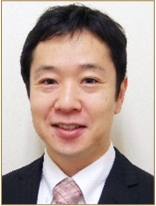
Intra- and perioperative management including radiographic evaluation, fluoroscopic guidance or navigation, and neurological monitoring has facilitated safe and successful spine surgeries. Intraoperative monitoring (IOM) is beneficial to examine whether the nerve is damaged and ultimately to prevent a possible nerve injury. The authors described the utility of triggered electromyogram (tEMG) and multimodal IOM (MIOM) in the resection surgery of cauda equina tumors comparing 38 tEMG-only group and 65 MIOM group [1]. They reported postoperative symptoms with IOM findings and also provided sensitivity and specificity of each modality.
Upon performing resection of cauda equina tumors, surgeons face the decision to sacrifice a nerve root, although it does not always result in a neurological deficit. This may result from the compensation by innervation from neighboring nerve roots while the tumor gradually grows [2,3]. In this study, no significant difference was found in the outcome (neurological deficit, gross total resection, and recurrence rate) between tEMG and MIOM. The authors did not change the surgical strategy depending on the IOM findings, and perhaps do not need to, because total resection of the tumor should be the primary purpose to reduce the recurrence. What we need to discuss carefully is whether the IOM findings could change our intraoperative decision. This study can contribute to balance the conflict between the complete resection of the tumor and the preservation of neurological functions, as the authors suggested that tEMG guided the decision on sacrificing the nerve, and motor evoked potential and somatosensory evoked potential could predict neurological deficits after nerve sacrifice. The authors clarified the reliability of IOM; a low sensitivity and high specificity in tEMG, and improved accuracy with MIOM. This helps us to predict the outcome, however, we need to be aware of false negatives.
The authors should be commended for accumulating the large population of 103 patients treated by a single experienced surgeon, which could make it difficult, on the other hand, to generalize the data for other institutions or surgeons. To demonstrate that tEMG or MIOM eventually reduces the postoperative neurological deficits, a prospective multicenter study would be warranted, which is not so easy to conduct.
I thank the authors for sharing with us their experience and insight. Although gross total resection of cauda equina tumor should be desirable to reduce the risk of recurrence, it is sometimes hard to achieve depending on tumor size, location, or pathology. The information from IOM to predict the postoperative neurological outcome would help surgeons to decide the nerve root resection and maybe to be less stressed to some extent. I am looking forward to reading another valuable research article from the authors soon.






























